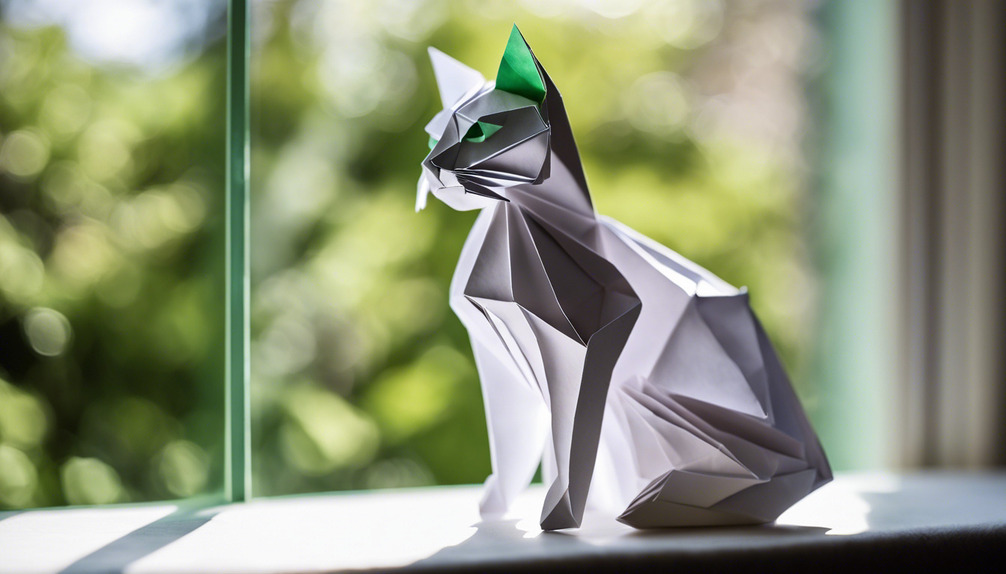Dealing with hearing loss in your older cat can be challenging. It can be upsetting when you can’t communicate with your cat as well as before.
However, there are simple steps you can take to help your cat adapt to their hearing loss and still have a good quality of life.
Key Takeaways
- Age-related hearing loss is common in older cats and should be monitored for signs such as lack of response to familiar sounds.
- Creating a safe and comfortable living space for older cats by providing soft surfaces and rugs to reduce noise and minimizing sudden loud noises can help adapt to their auditory needs.
- Utilizing visual cues, positive reinforcement, and incorporating gestures, hand signals, and vibrations can effectively communicate with a deaf cat.
- Providing sensory enrichment activities such as toys that stimulate other senses, puzzle toys, and creating a safe outdoor space for supervised exploration can compensate for hearing loss in older cats.
Early Detection and Monitoring
You can play a crucial role in managing your older cat’s hearing loss by actively participating in early detection and monitoring.
Deafness in cats can be a common occurrence as they age. Keep a close eye on any signs of age-related hearing loss, such as your cat not responding to familiar sounds or being easily startled.
Be on the lookout for any physical indications of ear issues, such as ear mites or abnormalities in the outer ear.
Regular veterinary check-ups are crucial for monitoring your cat’s hearing capabilities and detecting any changes early on. Consider getting a BAER test to accurately assess your cat’s hearing and establish a baseline for future monitoring.
Visual cues and hand signals can become essential tools for communicating with your deaf cat. Stay attentive to any signs of discomfort or distress related to its hearing and seek professional advice promptly.
Environmental Adaptations
Creating a safe and comfortable living space for your older cat is essential for managing their hearing loss. This includes ensuring they have easy access to food, water, and litter boxes in quiet areas of the home. To adapt your cat’s environment to their auditory needs, consider the following:
- Use soft surfaces and rugs to lower noise, making it easier for your cat to move around and rest comfortably.
- Use visual signals, such as hand gestures or light signals, to communicate with your deaf cat and get their attention.
- Minimize sudden loud noises around the house to prevent startling your cat and causing distress.
Your cat’s sense of hearing is an important part of their well-being, and making adjustments to their environment can greatly improve their quality of life. As you care for your aging cat, creating a peaceful and soothing atmosphere won’t only help them cope with their hearing loss but also strengthen your bond with them.
Your efforts to adapt their surroundings to their needs show your love and commitment to their pet health and happiness.
Communication and Interaction
To communicate and interact with a deaf cat, it’s important to use visual signals and positive reinforcement. This helps build a strong relationship and mutual understanding, after making sure they have a safe living environment as they age.
Your deaf cat relies on visual and tactile communication, so it’s essential to incorporate gestures, hand signals, and vibrations to attract their attention. Be mindful of their reliance on these cues rather than auditory signals.
Incorporating positive reinforcement and treats into your training will help effectively communicate with your deaf cat. Regular physical touch, petting, and play are also crucial to strengthen the bond with your deaf cat. These interactions not only provide comfort and security but also help in creating a strong emotional connection.
Frequently Asked Questions
How Can I Help My Elderly Deaf Cat?
You can help your elderly deaf cat by creating a safe indoor environment, using visual cues and vibrations to communicate, being patient and understanding, scheduling routine vet check-ups, and implementing training techniques based on visual cues and positive reinforcement.
How Do You Treat Hearing Loss in Cats?
You can treat hearing loss in cats with antibiotics for infections and surgery for growths. Some hearing loss can’t be reversed, but hearing aids may help. Coping involves indoor confinement, visual cues, and gentle touch.
Can You Restore a Cats Hearing?
You can’t fully restore a cat’s hearing, but you can provide a loving, supportive environment. Help them adjust by using visual cues and gentle touch for communication. Consider seeking a veterinarian’s guidance for specific cases.
How Do I Make My Deaf Blind Cat Comfortable?
You can make your deaf blind cat comfortable by creating a safe and familiar environment, using tactile cues, and providing a cozy space for retreat. It’s like guiding them through a gentle, comforting embrace.




